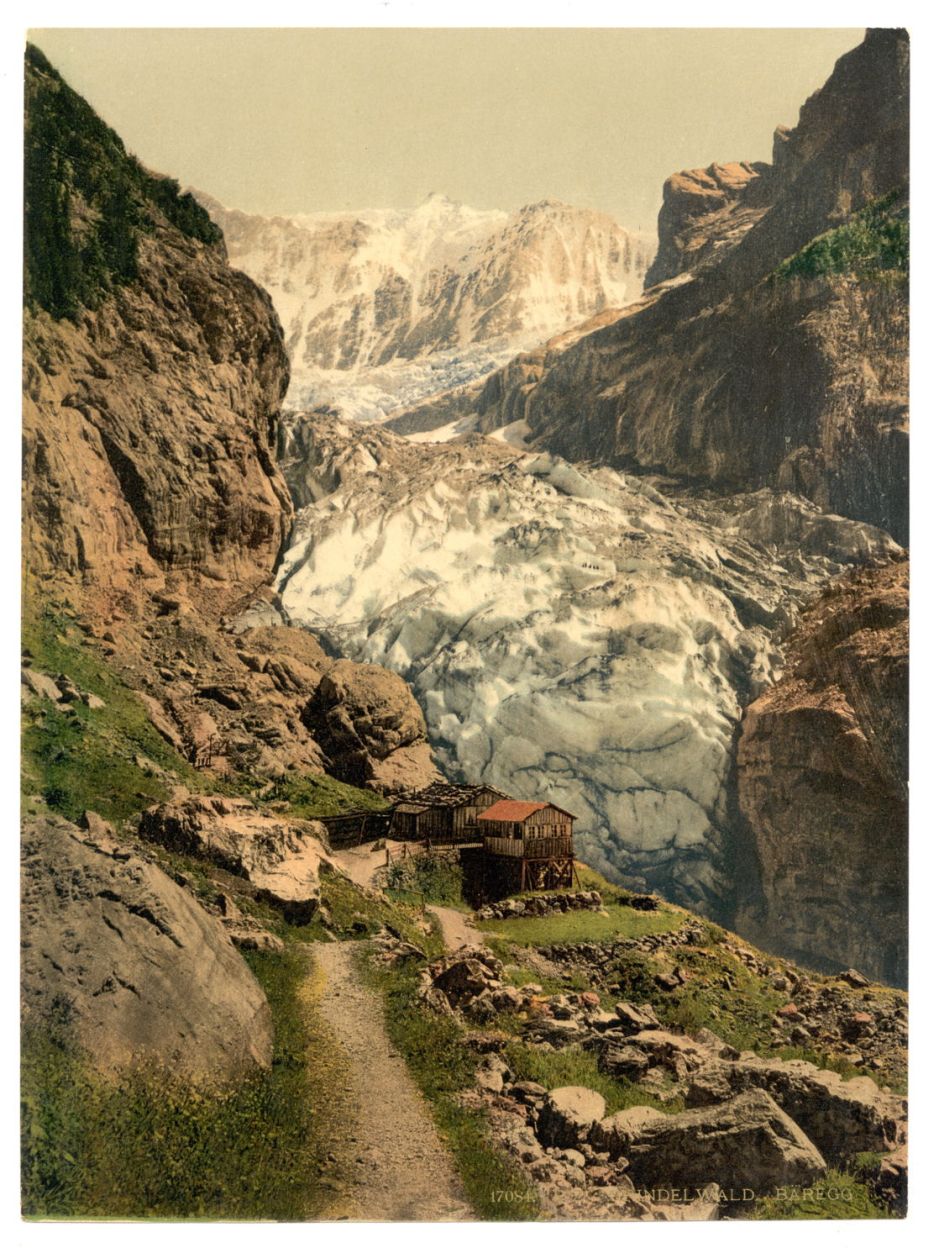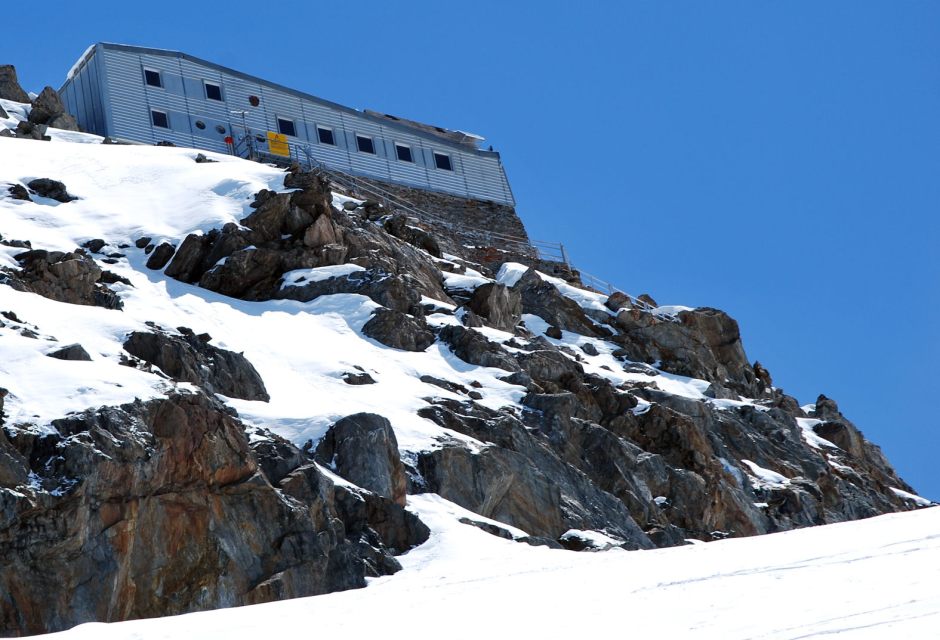As with fauna, the great majority of paintings of mountains show them as wildernesses, remote from any sign of human habitation. Those who lived there, either year-round or seasonally in the transhumance, built their humble dwellings, even small villages. Then in the nineteenth century huts catering for the new generation of mountaineers started to appear.

Joseph Anton Koch’s painting of the valley below Grindelwald Glacier in the Alps from 1823 shows a small farm, accommodated in wooden chalets.

François-Auguste Biard’s undated sketchy view In a Mountain Hut may have been made in front of the motif, onto paper. This is unusually social realist, showing the abject poverty and spartan conditions of many who lived in the more remote areas of France.

Alexandre Calame’s Chalets at Rigi from 1861 is equally stark. The Rigi is a massif in central Switzerland surrounded by lakes Lucerne, Zug, and Lauerz. This shows the rough construction of these huts, with their roof slates stabilised by external battens and larger rocks.

A decade later, in one of his early realist landscapes of The Staubbach Falls from 1871, Ferdinand Hodler shows a chalet in the right foreground, and a small church in the left.

Rosa Bonheur’s Weaning the Calves (1879) is set in a glorious summer Alpine or Pyrenean landscape, with a dry stone herdsman’s hut at the left, where the menfolk lived away from their families for the summer season.

In January 1871, the Swiss artist Albert Anker was witness to a strange event that must have affected him deeply. The French General Charles Bourbaki (1816-1897) had been put in command of the Army of the East, soldiers who had been hastily trained and were ill-equipped to fight in the Franco-Prussian War. The general and his troops were defeated in their attempt to raise the siege of Belfort, and were pursued by Prussians until they crossed the border into Switzerland in late January and early February. Just over half of his 150,000 men had survived, and were in desperate straits by this time, as the winter conditions worsened. The Swiss disarmed them, gave them as much shelter and aid as they could, as shown in Anker’s painting of Bourbakis from 1871. The survivors were returned to France once conditions permitted, in March.

By this time, many mountain refuges were being developed into inns catering for the growing tourist trade. This photograph by an unknown photographer shows the Bäregg Inn at the end of the Grindelwald glacier between 1890-1900.
Some huts aspired to even greater altitude.

The Refuge des Grands Mulets was first built on Mont Blanc in 1853, although this modern building was opened in 1960. It’s at an altitude of 3,051 metres (10,010 feet).

The Solvay Hut, shown in this photo taken in 2005, was built by the Swiss Alpine Club in 1915. It’s four thousand metres (13,123 feet) up on the Matterhorn, and is one of the most exposed buildings in the world.

